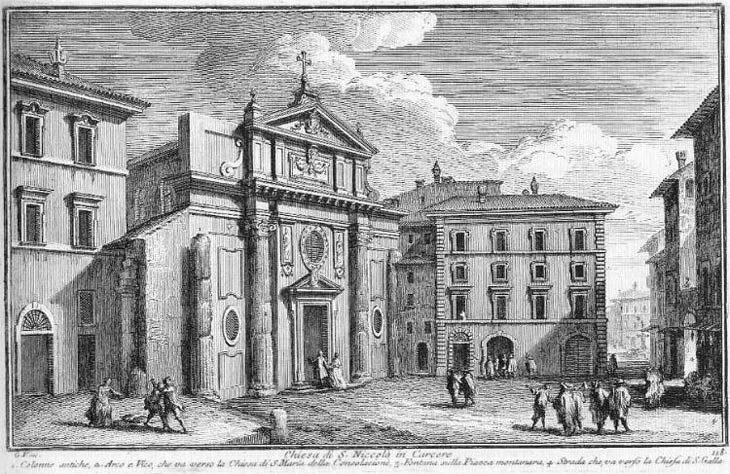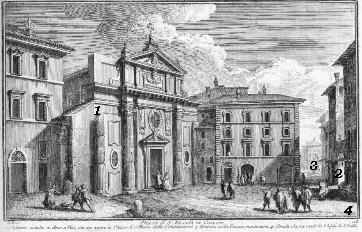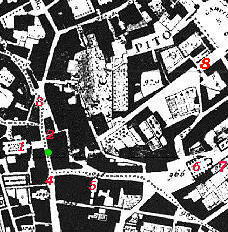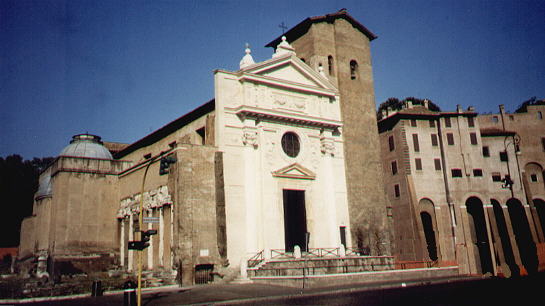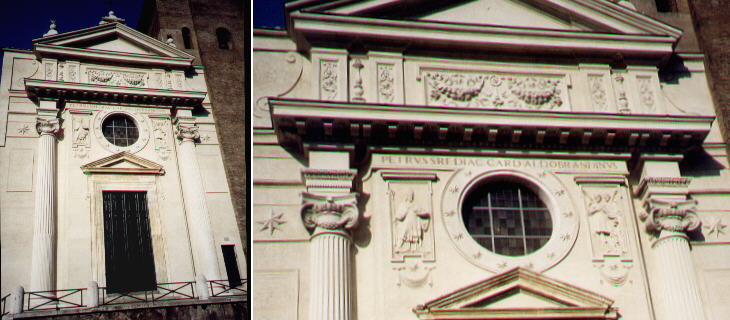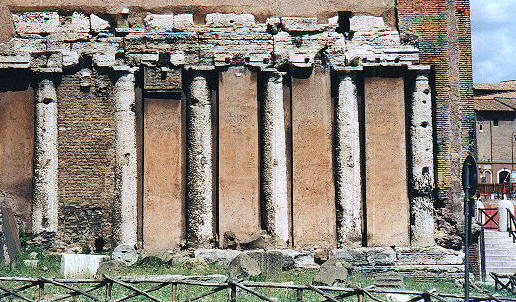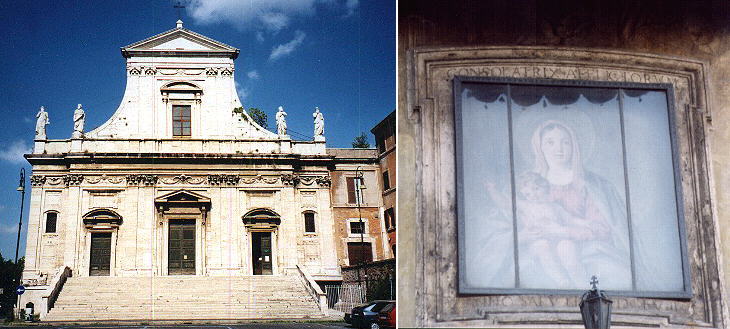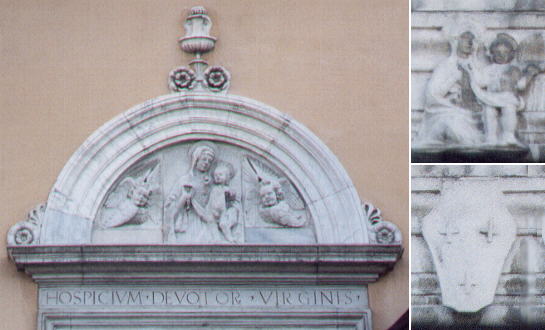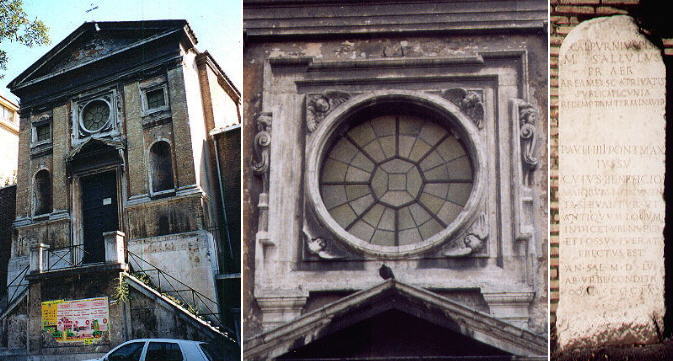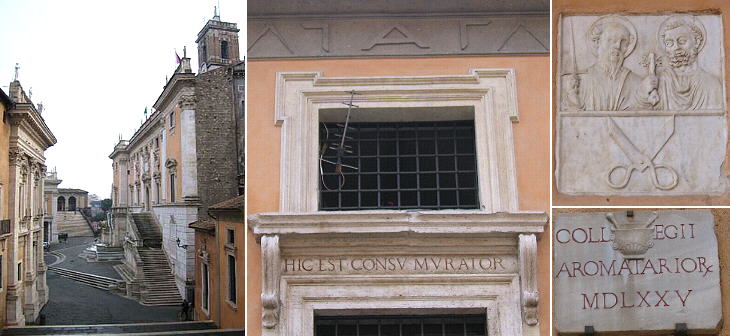  S. Niccolò in Carcere (Book 6) (Map C3) (Day 5) (View C9) (Rione Ripa) and (Rione Campitelli) In this page: The plate by Giuseppe Vasi Today's view S. Niccolò in Carcere S. Maria della Consolazione Ospedale della Consolazione S. Omobono Offices of the guilds
We are near Piazza Montanara in an area
where Roman ruins became medieval buildings or churches or even market-places.
Vasi adds to this plate a touch of melodrama: two men are fighting probably
for a woman and one of them has a knife! The view is taken from the green dot in the small 1748 map here below.
In the description below the plate Vasi made reference to: 1) Ancient Columns of S. Nicola in Carcere;
2) Street leading to S. Maria della Consolazione; 3) Fountain in Piazza Montanara; 4) Street leading to S. Galla.
3) is shown in detail in another page. The small map shows also: 5) S. Omobono; 6) S. Maria della Consolazione; 7) Ospedale della Consolazione; 8) Offices of the guilds.
The dotted line in the small map delineates the borders between Rione Sant'Angelo (small area on the left),
Rione Ripa (left lower quarter) and Rione Campitelli.
The net of small houses around the church was pulled down in the 1930s: the church and the nearby Palazzo Orsini are now isolated.
The church in its present form is due to Giacomo della Porta who
built it at the expense of a Cardinal Aldobrandini (the stars are part
of the Aldobrandini coat of arms) in 1599.
The church at the foot of the Capitol has a nice façade by Martino Lunghi which was completed in the XIXth century in the same style. The apse of the church has one of the finest madonnelle. It was painted in 1658 by Nicola Berrettoni to celebrate the end of the 1656-57 plague.
Ospedale della Consolazione was founded at the beginning of the XVIth century by uniting three small existing hospitals. It was modified and enlarged several times, but it gradually lost importance and in 1936 it was closed. In 1942 several buildings on the slopes and at the foot of Campidoglio were pulled down to isolate the hill: this led to the partial loss of the hospital buildings, but its most ancient part with two nice Renaissance portals was spared (although it is now used for other purposes). The coat of arms with three crosses is a reference to the three hospitals.
The area around the small church was widely excavated in the 1960s
and many interesting remains were found dating back to the very early days
of Rome. The stairs leading to the church show the difference of the ground
level. Today's level is higher than the level at the time of Ancient Rome,
but is lower than the level at Vasi's time (this can be noticed also in
S. Niccolò in Carcere).
Everybody knows the grand entrance to
Piazza del Campidoglio, designed by Michelangelo. Not many are aware that during working hours the piazza
can be reached from S. Niccolò in Carcere going up through a park on the southern side of the hill. One reaches a Renaissance loggia
identical to and facing that of Convento di S. Maria in Aracoeli; the buildings on both sides of the steps leading down to the piazza hosted the offices of the Roman guilds, which
were decorated with inscriptions and reliefs showing the instruments of their trade (MURATOR. = masons; AROMATARIOR. = Perfume makers).
Next plate in Book 6: S. Grisogono Next step in Day 5 itinerary: S. Giorgio al Velabro Next step in your tour of Rione Ripa: S. Giorgio al Velabro Next step in your tour of Rione Campitelli: Portico di Monte Caprino
Go
to |
All images © 1999 - 2003 by Roberto Piperno. Write to romapip@quipo.it
